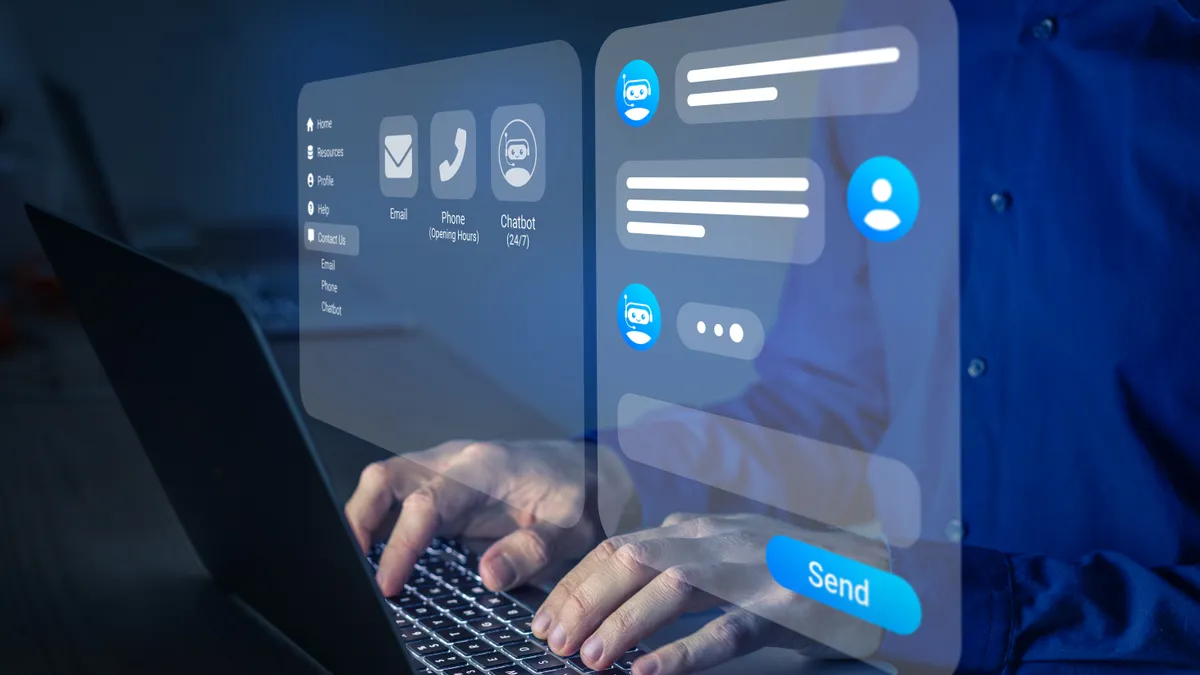Dive Brief:
- Generative artificial intelligence may annually boost U.S. labor productivity by 0.7% through 2040, McKinsey said in a study released just days after the Labor Department reported that productivity by one measure has slumped more than any time since 1948.
- About 75% of the value from generative AI will benefit customer operations, marketing and sales, software engineering and research and development, McKinsey said. The new technology may add as much as $4.4 trillion to global output, McKinsey said, without specifying the time frame.
- Knowledge workers — especially those involved in collaboration and decision making — will likely face more disruption from generative AI than less educated members of the labor force, McKinsey said. “A significant number of workers will need to substantially change the work they do,” McKinsey said. “They will also need support in making transitions to new activities.”
Dive Insight:
Although many U.S. companies in recent years have spent billions of dollars on digital technology, labor productivity during the first quarter shrunk at a 2.1% annual rate compared with the fourth quarter of 2022, the Labor Department reported on June 1.
Productivity during the quarter fell 0.8% compared with the same period last year. The “decline is the first time the four-quarter change series has remained negative for five consecutive quarters” since collection of the data began in 1948, according to the Labor Department.
McKinsey is not the only firm to forecast that generative AI may slow, if not reverse, the productivity slump.
Goldman Sachs estimates that the technology may annually increase productivity growth by 1.5 percentage points over a decade while spurring a $7 trillion jump in global gross domestic product.
Yet AI will also shake up the workplace.
Roughly two-thirds of U.S. occupations are exposed to some form of AI automation, Goldman said after reviewing more than 900 occupations. The technology could assume from a quarter to as much as half of the workload of these workers’ tasks.
So-called large language models such as ChatGPT imperil jobs for workers in dozens of professions, including accountants, auditors, financial quantitative analysts, blockchain engineers, interpreters, mathematicians and journalists, according to a study by researchers at the University of Pennsylvania and OpenAI.
The technology over time will streamline at least 10% of the tasks performed by 80% of workers, and half of the tasks done by 19% of workers, the researchers said.
McKinsey forecasts that AI automation could eventually take over as much as 70% of worker hours, with generative AI jarring highly educated workers the most.
The technology “is likely to have the biggest impact on knowledge work, particularly activities involving decision making and collaboration,” McKinsey said.
Generative AI will especially prove helpful in streamlining customer interactions, producing creative marketing and sales content, and drafting computer code based on natural language prompts, McKinsey said.
The technology “has the potential to revolutionize the entire customer operations function, improving the customer experience and agent productivity through digital self-service and enhancing and augmenting agent skills,” McKinsey said.
Generative AI could increase productivity in customer care by as much as 45%, McKinsey said, without specifying a time frame. McKinsey said it did not study how the technology may raise customer satisfaction and retention by helping employees provide more personalized help.
“The rush to throw money at all things generative AI reflects how quickly its capabilities have developed,” McKinsey said.
Investment in generative AI by venture capital firms and other private investors annually surged 74% from 2017 to 2022, McKinsey said.















